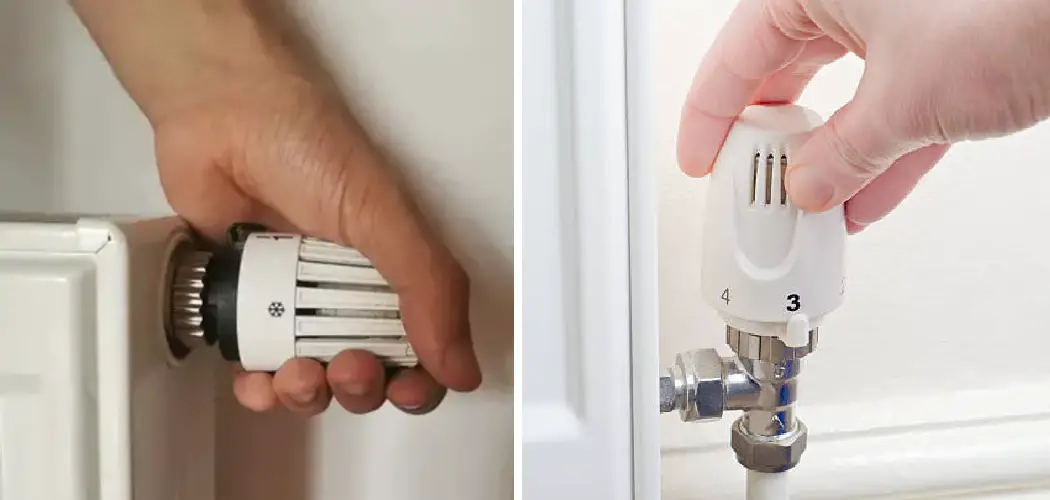Are you trying to figure out how to turn off baseboard heater in one room of your house? Don’t worry; it can be done without having to shut down all the heat at once. In this blog post, we will walk you through a step-by-step approach for turning off your baseboard heater in just one room of your house.
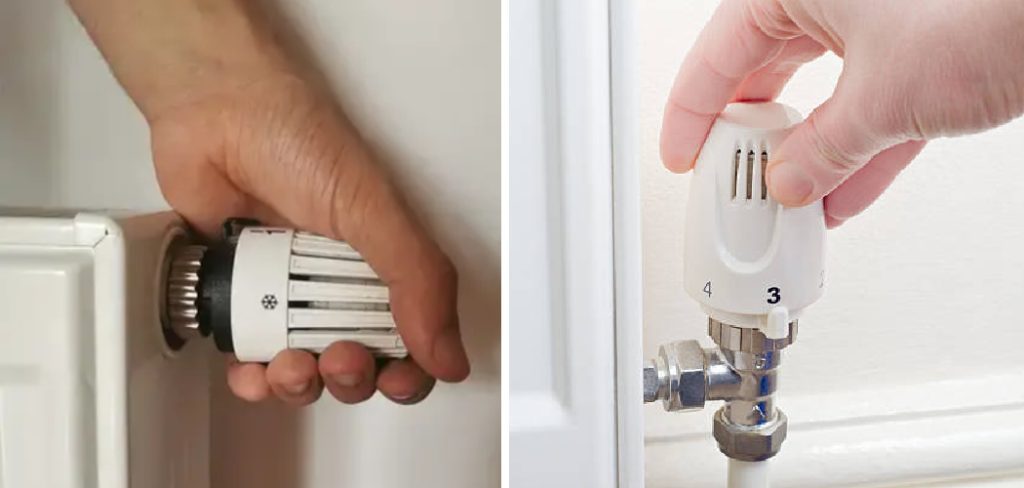
With our easy-to-follow guide and tips, you won’t have to stress about leaving unused areas overly warm or too hot! We will cover everything from finding the correct breaker switch for your baseboard heater and correctly resetting that breaker switch so that it powers only certain rooms in the home.
So, if you’re looking for simple ideas and solutions on how to control either an electric or gas-powered baseboard heater – then keep reading!
What is a Baseboard Heater?
Baseboard heaters are electric heating systems that can be installed in any room of your house. They work by directing heat into the room through a series of fins, which then disperse the warm air throughout.
The baseboard heater works more efficiently than other types of heaters because it does not require additional insulation or ductwork to install.
Understand the Baseboard Heaters
How Do Baseboard Heaters Work?
Baseboard heaters operate on the principle of convection heating. They consist of a heating element encased in a metal pipe, which is surrounded by aluminum fins. As the heating element warms up, it heats the air in the pipe which then rises through the fins and out into the room, creating a cycle of warm airflow. This efficient heat circulation warms up the entire room consistently.
Different Types of Baseboard Heaters
There are mainly two types of baseboard heaters: electric and hydronic. Electric baseboard heaters are the most common type. They use an electric heating element to produce heat. On the other hand, hydronic baseboard heaters contain a pipe filled with fluid, usually water or oil, that is heated by an electric element or a boiler. The heated fluid then circulates through the heater, emitting warmth into the room. Despite being more energy-efficient, hydronic baseboard heaters are more expensive and complex to install than their electric counterparts.
Safety Considerations When Dealing with Baseboard Heaters
While baseboard heaters are generally safe, it’s important to maintain proper safety measures. Firstly, ensure that the heater is installed away from flammable materials, such as curtains or furniture, to prevent fire hazards. Regularly clean the heater to avoid dust accumulation that could potentially ignite. Lastly, ensure that equipped safety features, like temperature controls and automatic shut-off, are functioning correctly to prevent overheating.
Identifying Your Baseboard Heater System
Before you set about turning off your baseboard heater, it’s important to familiarize yourself with the specifics of your heating system.
Checking the Type and Model of Your Baseboard Heater
Each baseboard heater has its own specifications which are dependent on the type and model you have in your home. Some might be electric, while others might be hydronic. Identify the make and model of your heater, as this information will help in understanding the functionality and control options available.
Locating the Thermostat for the Specific Room
The thermostat, a crucial component of the baseboard heater, will be where you exert control over the system. Depending on your home’s layout, each room may have its own thermostat, or a single thermostat may control multiple rooms. Find the thermostat of the room you want to regulate.
Understanding the Control Options Available
Baseboard heaters may have different control options based on their make and model. Some will have dials or switches on the unit itself, while others are controlled solely through the room’s thermostat. Familiarize yourself with these controls; they’ll be essential when you want to adjust the room’s temperature or turn off the heater.
11 Step-by-step Guidelines on How to Turn Off Baseboard Heater in One Room
Step 1: Unplug the Baseboard Heater
The first step to turning off the baseboard heater in one room is to unplug it from the power source. Carefully locate the cord running from the heater to the wall outlet and unplug it. It’s best to do this before beginning any of the other steps. Otherwise, you could risk being shocked by the unit. It’s also important to make sure the power switch is turned off before unplugging the heater.
Step 2: Turn off the Circuit Breaker
The next step is to head over to your circuit breaker box and turn off the power supply for that particular baseboard heater. Make sure you know exactly which circuit breaker controls this device, as there might be multiple breakers in a single box. But it’s important to note that this step is optional. But, if you’re worried about safety or want to completely disable the baseboard heater in one room, it is a good idea.
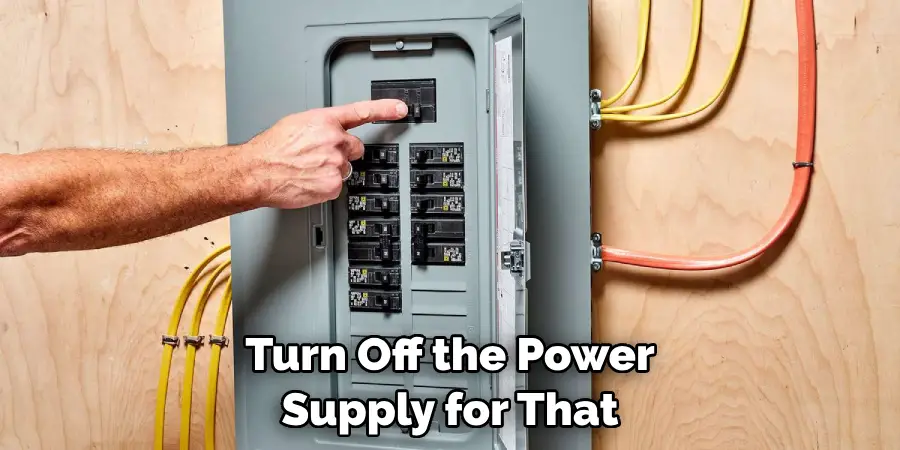
Step 3: Check the Heater’s Temperature Settings
It’s always important to double-check the thermostat settings on your baseboard heater before turning it off completely. If it was set at a higher temperature than what is necessary, then you can lower the setting instead of shutting off the power completely. This is more energy efficient than turning the heater off and then back on again.
Step 4: Shut Off Power to the Room
Once you’ve verified that the temperature settings are correct, it’s time to shut off power to the room. Find the switch on the wall or outside of the door frame and flip it off. This will prevent any potential accidents or shocks from occurring when working with electrical appliances. It’s also a good idea to ensure that all windows are closed during this step.
Step 5: Remove the Heater Cover
The final step before actually turning off your baseboard heater is to remove its cover. Carefully unscrew any screws holding it in place and carefully slide off the front panel so that you can access all of its components. If you have any experience with electrical wiring, you can try to disconnect the wire from the thermostat and heating element. Otherwise, it is best to call a professional to do this safely.
Step 6: Unscrew Wires and Detach Connectors
Now that you have full access to all parts of your baseboard heater, it’s time to start disconnecting everything. Begin by unscrewing the wires from the junction box and then detach any connectors attached to it. It is important to be mindful of where each wire was connected, as you will need to reconnect them in the same way once you turn on the power again.
Step 7: Locate and Disconnect Ground Wire
The ground wire is usually located on the lower right side of your baseboard heater. Carefully disconnect this wire so that it is no longer connected to any power source. This will ensure that all electrical components are completely shut down and safe to work with. This step is especially important if you plan to replace any parts of the heater. It’s also important to remember that the ground wire should be reconnected before you turn the power back on.
Step 8: Remove the Heater From the Wall
Once you have disconnected all of the necessary wirings, you can now remove your baseboard heater from the wall or floor where it’s been installed. This step requires a bit of strength as you may have to use a pry bar or other tool to prie it loose from the wall. It’s important to make sure that all wiring is completely off the heater before you attempt to remove it.
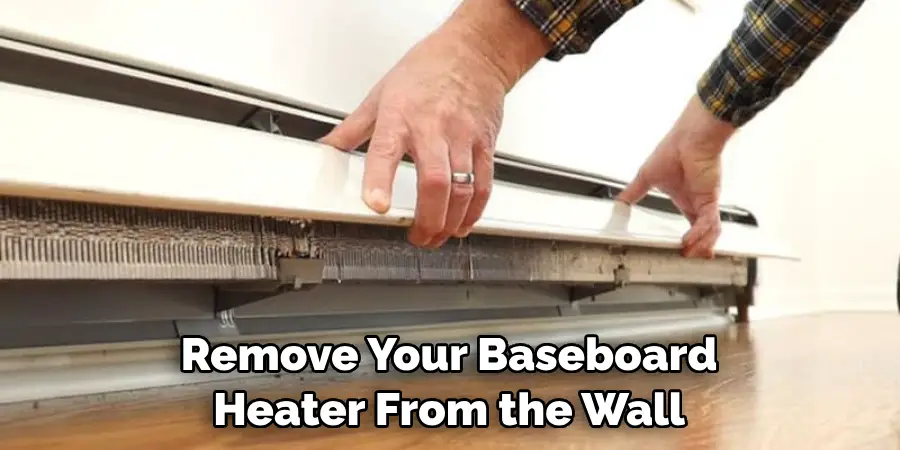
Step 9: Remove Wires From the Heater
Now that your baseboard heater is safely removed from the wall, it’s time to take out all of its wiring components. Carefully remove each wire one by one and set it aside for proper disposal. Although it might seem like a tedious process, this step is important to make sure that the heater is fully disconnected from the power source. If any wires are left attached, this could lead to an electric shock when the power is turned back on.
Step 10: Double-check All Connections
Before reinstalling your baseboard heater, make sure to double-check all of your connections and wiring setup. This is essential in order to ensure that everything is securely connected before turning on the power again. It’s also important to make sure that all of the wires are properly insulated and that the proper voltage is being supplied.
Step 11: Reinstall the Baseboard Heater
The last step is to reinstall your baseboard heater in its original location. Make sure it’s properly secured, and all wires are tightly connected before flipping the switch or plugging it back into the wall outlet.
It’s also important to check that all wiring is properly insulated and nothing is loose or exposed. This will help ensure that your baseboard heater stays safely powered off and will be able to deliver the heat you need when needed.
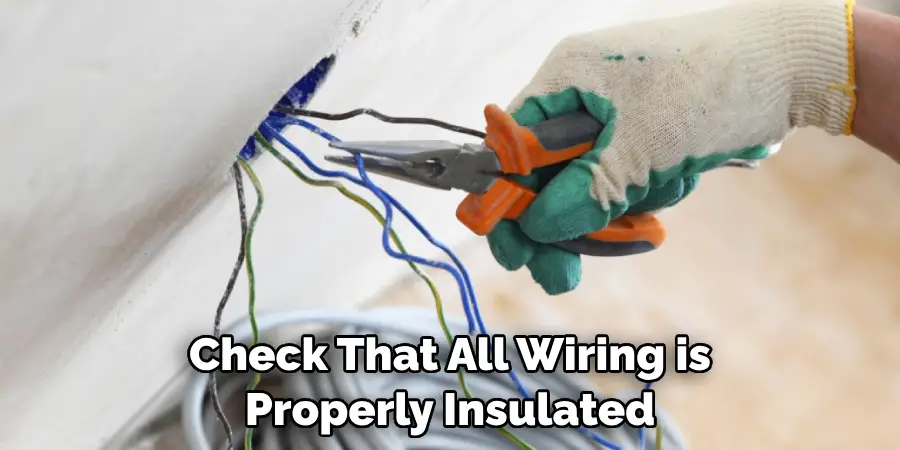
With these 11 steps on how to turn off the baseboard heater in one room, you should now have control over the temperature of each individual room in your house!
Keep in mind that energy efficiency can also be improved by using a programmable thermostat, as this will reduce your overall utility costs while still keeping everything comfortable. Good luck with turning off your baseboard heater!
8 Troubleshooting Tips When Working with Baseboard Heaters
Troubleshooting Tip 1: Check the Thermostat
The first step in troubleshooting a baseboard heater is to check the thermostat. Make sure it’s set to the desired temperature and that all connections are securely connected. If the thermostat isn’t working, then it is likely that your baseboard heater won’t run either.
Troubleshooting Tip 2: Check the Wiring
If your baseboard heater isn’t working, then it is likely that there is an issue with the wiring. Make sure all wires are tightly connected and securely in place. If any wires appear to be frayed or damaged, then you should replace them as soon as possible.
Troubleshooting Tip 3: Test the Voltage
Testing the voltage is also a good way to ensure that your baseboard heater is functioning properly. Use an electrical multi-meter to check the voltage, and make sure it’s set at the correct level for your appliance. If it isn’t, then you may have to adjust some of the settings in order for it to work properly.
Troubleshooting Tip 4: Check for Obstructions
If your baseboard heater isn’t working, then it is possible that there are obstructions blocking the airflow. Make sure to check all vents and openings to ensure that there aren’t any blockages that could be hindering the performance of your heater.
Troubleshooting Tip 5: Check the Filters
Another common cause of baseboard heater problems is a dirty filter. Make sure to clean or replace your filters regularly in order to ensure that your appliance is running at its best.
Troubleshooting Tip 6: Inspect the Heater for Damage
Inspecting your baseboard heater for any signs of damage is also a good way to troubleshoot common issues. Make sure all components are in working order and that there aren’t any loose or broken parts. If you find any damage, then it is best to replace the part as soon as possible.
Troubleshooting Tip 7: Check for Leaks
Leaks can be another common issue with baseboard heaters. Make sure to check all of your seals and connections for any signs of a leak. If you notice any, then it is best to repair them right away in order to prevent further damage.
Troubleshooting Tip 8: Have an Expert Check It Out
If none of the above troubleshooting tips help, then it may be best to have a professional take a look at your baseboard heater. An expert will be able to diagnose the issue and make any necessary repairs so that you can get back to enjoying the warmth of your home in no time.
By following these eight tips on how to troubleshoot common problems with baseboard heaters, you should now be able to keep your appliance running smoothly and safely all winter long. Remember, if the issue persists, then it is best to contact a professional for help in order to ensure that everything is functioning properly.
Tips for Improving the Efficiency of Your Baseboard Heater Setup
Tip 1: Use a Programmable Thermostat
Using a programmable thermostat, you can reduce your energy consumption and still maintain the desired temperature. This type of device allows you to set different temperatures for each room so that each one is comfortable at different times of the day or night. You can also adjust the amount of heat generated by each baseboard heater in order to maximize efficiency.
Tip 2: Insulate the Heater and Walls
Proper insulation of your walls and heater is essential for energy savings. Make sure you use proper wall insulation, particularly near the heater, as this will help reduce heat loss from the room. Additionally, make sure that all wires are properly insulated so that they don’t short-circuit and become a safety hazard.
Tip 3: Use Energy Saving Bulbs
Replacing traditional light bulbs with energy-saving ones can help you reduce your electricity consumption. LED bulbs are more efficient than incandescent bulbs and produce less heat, which will make it easier to keep your home at the desired temperature. Furthermore, they have much longer lifespans, so you don’t have to worry about constantly replacing them.
Tip 4: Turn Off Heaters When Not in Use
It is important to turn off your baseboard heaters when they are not in use. Doing so will reduce the amount of energy being used and help keep your home at a comfortable temperature without wasting electricity. If you have a programmable thermostat, you can easily set it to turn off the heaters when no one is home and then switch on again when someone returns.
Tip 5: Install High-EfficiencyHigh-efficiency Heaters
High-efficiency baseboard heaters are much more energy-efficient than traditional ones and will help reduce your overall utility costs. Additionally, these heaters are much quieter and produce less noise than standard baseboard heaters. When selecting a new heater, make sure to purchase one with an Energy Star rating in order to get the most out of your purchase.
Tip 6: Consider Adding a Heat Pump
Heat pumps provide an efficient way to keep your home warm during the colder months while using less energy. They use a refrigerant to transfer heat from the outside air into your home, so you don’t have to rely solely on electricity for heating. Additionally, they are much quieter than traditional baseboard heaters and can provide improved comfort.
Overall, following these tips will help make sure that your baseboard heater setup is as efficient and effective as possible. By properly maintaining and following the steps above, you can ensure that your heater will keep your home comfortable without wasting energy or money.
How to Winterize Your Baseboard Heaters for Maximum Efficiency During the Colder Months
Step 1: Clean Your Baseboard Heaters
Before winter sets in, it is important to give your baseboard heaters a thorough cleaning. Dust and debris can build up over time and obstruct the airflow, making your heater work harder than it needs to in order to heat your home. Use a vacuum or a damp cloth to gently remove any dirt or dust from the exterior of the heater.
Step 2: Check for Leaks and Seal Them
As mentioned earlier, leaks can be a common issue with baseboard heaters. Before winter arrives, make sure to inspect all seals and connections for any signs of leakage. If you find any, seal them properly using caulk or weatherstripping. This will not only help improve the efficiency of your heater but also prevent any potential safety hazards.
Step 3: Insulate Your Windows and Doors
Proper insulation can greatly improve the efficiency of your baseboard heaters. Make sure to seal any drafts around windows and doors with weatherstripping or caulking. This will help keep the warm air inside and prevent cold air from seeping in, making your heater work harder to maintain the desired temperature.
Step 4: Use a Programmable Thermostat
As mentioned earlier, using a programmable thermostat can greatly improve the efficiency of your baseboard heaters. Set different temperatures for different times of the day and adjust the amount of heat generated by each heater accordingly. This will help reduce energy consumption and save you money on your utility bills.
Step 5: Consider Using a Space Heater
If you have a room that is not frequently used, consider using a space heater instead of keeping the baseboard heater on. This will help save energy and money by only heating the rooms that are in use. Just make sure to follow all safety precautions when using a space heater.
By following these steps, you can winterize your baseboard heaters and ensure that they are running at maximum efficiency during the colder months.
Tips for Selecting the Right Size and Type of Baseboard Heater for Your Home
Tip 1: Consider the Size of Your Room
When selecting a baseboard heater, it is important to consider the size of your room. A larger room will require a more powerful heater in order to maintain a comfortable temperature.
Tip 2: Determine the Type of Heat Source
There are two types of baseboard heaters – electric and hydronic (water-based). Electric baseboard heaters are more common and easier to install, but they can be more expensive to operate. Hydronic heaters are more energy-efficient and provide a consistent heat source, but they require a professional installation.
Tip 3: Calculate the Required Wattage
To determine the wattage needed for your baseboard heater, you can use this formula: square footage of room x 10 watts = required wattage. Keep in mind that this is just a rough estimate, and you may need to adjust based on other factors such as insulation, ceiling height, and climate.
Tip 4: Consider Energy Efficiency
When selecting a baseboard heater, look for one with an Energy Star rating. This ensures that the heater meets certain energy efficiency standards and can help you save on your utility bills.
Tip 5: Think About Noise Levels
Some baseboard heaters can be quite noisy, especially if they have a fan. If noise is a concern for you, look for a heater with a quiet operation, or consider using a hydronic heater as they don’t have fans.
By considering these tips, you can select the right size and type of baseboard heater for your home, ensuring efficient heating and cost savings in the long run. So, make sure to do your research and consult with a professional before making a purchase.
Cleaning and Maintaining Your Baseboard Heater for Optimal Performance
Step 1: Turn Off the Heater
Before you start cleaning your baseboard heater, make sure that it is turned off and it has cooled down completely. This ensures your safety while cleaning.
Step 2: Remove the Cover
In most cases, the cover of the baseboard heater is detachable. Carefully remove the cover to gain access to the interior parts of the heater.
Step 3: Vacuum the Interior
Use a vacuum cleaner with a brush attachment to remove dust and debris from the heater. Be careful not to damage any delicate parts while doing so. Pay special attention to the fins as they can quickly accumulate dust, which can hinder heat transfer.
Step 4: Clean with a Damp Cloth
For stubborn dirt, use a damp cloth to gently clean the internal components of the baseboard heater. Avoid using any harsh cleaning chemicals that might corrode the parts.
Step 5: Dry the Heater
Once you have cleaned the heater, leave it to dry completely. This is important as any moisture left inside could lead to electrical problems.
Step 6: Replace the Cover
After the heater has dried, carefully replace the cover. Make sure it is securely fastened to avoid any accidents.
Step 7: Regular Maintenance
Cleaning your baseboard heater should be a part of your regular maintenance routine. It is recommended to clean it at least once every heating season to ensure optimal performance.
Remember, proper maintenance and cleaning of your baseboard heater not only ensures its efficient operation but also extends its lifespan. However, if you encounter any issues during cleaning or maintenance, it’s best to consult a professional to avoid causing any damage.
Frequently Asked Questions
Q: How Do I Know When to Turn Off the Baseboard Heater in One Room?
A: If you find that a particular room is too warm or too cool for your comfort, it’s time to turn off the baseboard heater in that room. This can be done manually by following the steps outlined above or by using a programmable thermostat.
Q: What Should I Do if My Baseboard Heater is Not Turning Off?
A: If you’ve followed all of the steps but still find that your baseboard heater is not turning off, then it’s likely an issue with the wiring or connections. Try double-checking all of your connections and making sure they are secure before flipping the switch again. If this still doesn’t work, you may need to call an electrician to take a look at it.
Q: Are Baseboard Heaters Safe to Use?
A: Yes, as long as they are installed properly and all wiring is connected correctly. It’s also important to make sure that there are no frayed wires or insulation wear on the cords. If you find any of these issues, it’s best to turn off the power immediately and contact a professional for assistance.
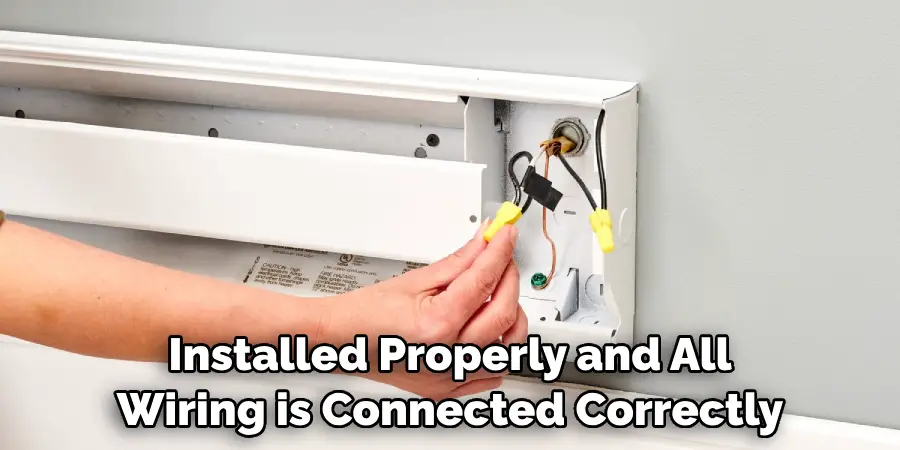
Q: What is the Best Temperature Setting for a Baseboard Heater?
A: The ideal temperature setting on your baseboard heater should be around 68-72 degrees Fahrenheit. This will keep your room comfortable while still saving energy costs.
Conclusion
Hopefully, armed with the right information and some ready-to-go tools, you will be able to confidently approach your baseboard heater project. Whether you wish to turn off the heat in just one room or two, you now have the know-how to complete the job. And to make sure that your repair is successful and secure for long-term use, always ensure that all safety precautions are taken during the process.
By taking small and simple steps on how to turn off baseboard heater in one room to ensure proper maintenance of your baseboard heater, you can rest assured knowing that it will be reliable throughout the colder months! If you’re ever unsure about a project involving electrical work, it’s best to consult with a certified professional technician who can assist with any questions or concerns.
Taking on this task may seem daunting but when done properly can bring great savings both emotionally and financially. With a clear plan of action and knowledge of basic housekeeping techniques such as how to turn off baseboard heather in one room, you’ll keep your home comfortable all year round!

